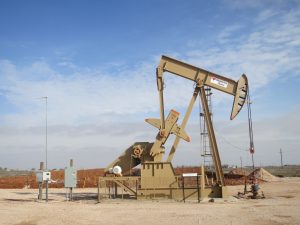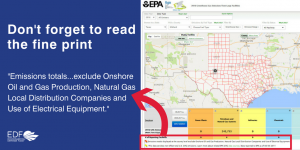 Recently, Texans for Natural Gas (TXNG) issued a report claiming methane emissions have drastically decreased in several of the largest natural gas producing counties in Texas from 2011 to 2016.
Recently, Texans for Natural Gas (TXNG) issued a report claiming methane emissions have drastically decreased in several of the largest natural gas producing counties in Texas from 2011 to 2016.
The notion of methane emissions rapidly declining across Texas during the largest U.S. oil and gas boom of the century is described in the report’s blog post as amazing, which in fact it would be if the report were accurate. It isn’t. The TXNG report doesn’t even come close to providing a complete representation of methane emissions across the featured Texas counties. TXNG claims methane emissions declined 51 percent in several of the state’s largest producing natural gas counties, and 39 percent across ten of the largest oil-producing counties.
And here’s what data is missing: methane emissions generated from onshore production and gathering. Simply put, the vast majority of emissions aren’t even included. (What’s even worse, their original report failed to disclose that the emission data referenced in TXNG’s blog post only accounted for methane emissions from large midstream gas facilities.) The revised report’s claims about 2016 reductions in Midland County only account for emissions from six processing plants and compressor stations while ignoring the over 2,000 oil and gas wells. Drawing broad conclusions from a tiny fraction of facilities is shoddy analysis at best and deliberately misleading at worst.
Bad data paints false reality
Of course, this isn’t the first time an oil and gas industry group has tried to slice, dice and cherry pick methane data to create false and misleading narrative.
TXNG continues to insist on using Greenhouse Gas Reporting Program (GHGRP) data which is widely accepted as an incomplete data set. In fact, EPA issues a warning when you visit the website: “This data set does not reflect total U.S. GHG emissions.” That’s why the EPA also has the Greenhouse Gas Inventory (GHGI), which for 2015 estimates 8.2 million metric tons (MMT) of methane from the U.S oil and gas supply chain, compared to the 2.8 MMT reported to the GHGRP. But even using the incomplete GHGRP data, what we see in the Texas Permian is about a six percent decrease in reported onshore production emissions from 2011-2016. However, emissions increased six percent from 2015 to 2016. So while regulations passed in 2012 and 2016 are likely having some impact (the same regulation TXNG and other industry groups want to roll back) the big picture shows that emissions aren’t decreasing fast enough. For total methane emissions from the U.S. oil and gas supply chain, the GHGI shows a negligible decrease from 2011-2015 of about 0.1%. That’s just nothing to brag about.
[Tweet “Texans for Natural Gas uses misleading data on methane in Texas”]
TXNG and other industry groups continue to insist that methane emission regulations are unnecessary because, in part, the industry has the economic incentive to save their own natural gas product. Yet in 2015 alone, Permian operators in Texas flared 45.5 billion cubic feet of natural gas, enough to serve all of the household needs in Texas Permian counties for two and a half years. Some Texas Permian oil and gas producers are wasting close to 10 percent of their produced gas due to flaring practices, highlighting the fact that the oil and gas industry continues to struggle to control natural gas waste.
More work needs to done
Cost-effective, readily available technology and industry best practices exist to minimize methane emissions. Of course we want to see reports citing major methane emission reductions in the future just as much as anyone else in the industry, but the problem needs to be addressed collectively using complete and accurate data.
Responsible operators within the industry are starting to embrace new methane mitigation advancements and technologies. A number of operators have already successfully implemented methane emissions reduction programs, an encouraging trend to watch as more companies see the value of recouping lost product and reducing their company’s environmental footprint. Some companies even embrace the very regulations TXNG are trying to undo. Last fall, 10 oil and gas companies responsible for 20 percent of global production pledged to move towards near zero methane emissions as part of the Oil and Gas Climate Initiative, followed by a similar pledge by BP, Shell, Exxon and five other energy companies advocating for methane regulations. And Texas energy producer XTO (a subsidiary of ExxonMobil) announced an emissions reductions program and publicly noted that the company is already complying with the BLM methane waste rule proving that the rule is practical and achievable.
The tide appears to be slowly turning, but operators producing natural gas in Texas have their work cut out for them. Now is not the time to falsely assume methane emissions have been managed effectively in Texas based on incomplete industry reports. Operators need to stop the waste of this important domestic energy resource and refrain from needlessly polluting Texas skies.










